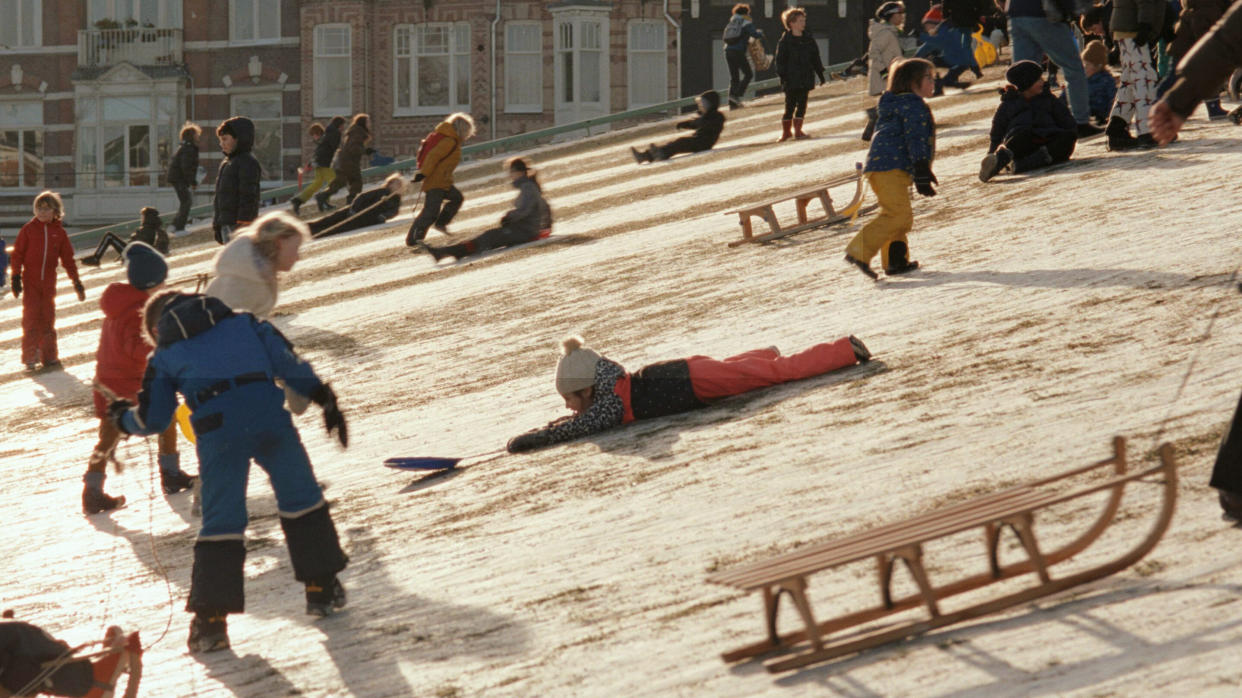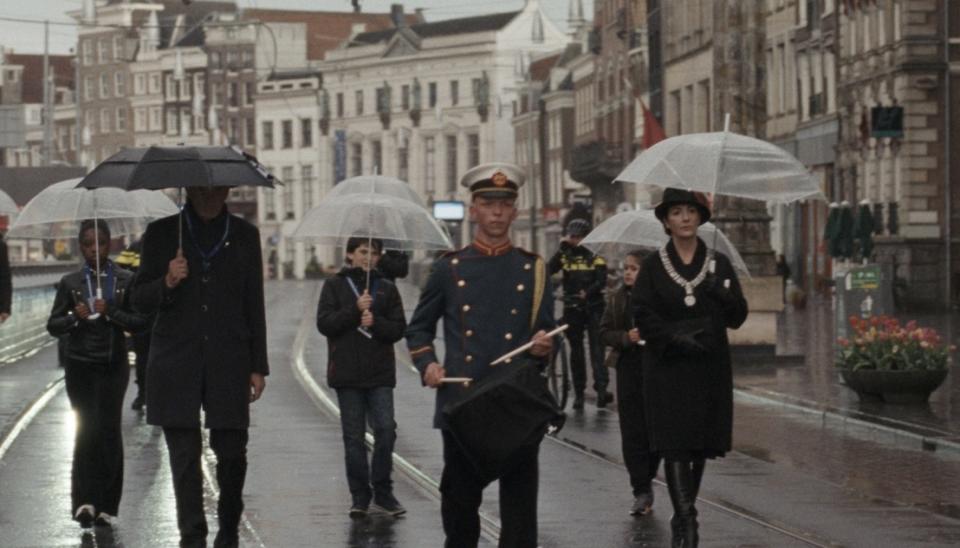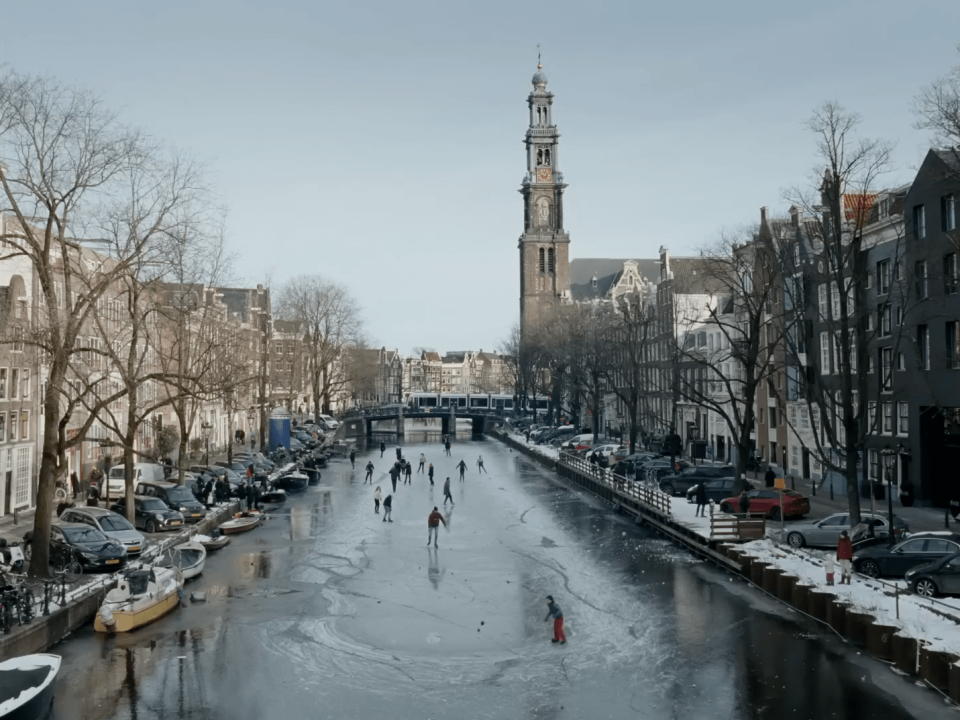Documentary ‘Occupied City’ Skips Archival Footage in Favor of Something Far More Cinematic

- Oops!Something went wrong.Please try again later.
- Oops!Something went wrong.Please try again later.
The opening of Steve McQueen’s “Widows” is a great example of how filmmaking encourages us to create stories in our heads that exist across space and time. There’s a fantastic, rhythmic seesaw between domestic moments between a set of couples and moments of the men running from a heist gone wrong; in the intertwining of the two —with sound matches that couldn’t be coming from more different sources but still audibly line up — McQueen and editor Joe Walker lead the viewer to conclusions about who these thieves are in the moments right before they are no more.
“Occupied City,” McQueen’s latest film, expands on this particularly cinematic capacity to create story via the deliberate selection and omission of imagery — which is a roundabout way of saying that it’s a film about the Nazi Occupation of Amsterdam during World War II that doesn’t use archive footage, talking heads, or dramatize any scenes. “Occupied City” intertwines narrator Melanie Hyams stating what happened during the war at particular locations throughout the city while McQueen, DP Lennert Hillege, and the film’s small crew record what that place looks like today — including the haunting emptiness of Amsterdam at the beginning of the COVID-19 pandemic.
More from IndieWire
The combination of absence and information, imagery and the suggestion of other images, doesn’t tell us a single story about Amsterdam’s past or present. It gets the audience to do what all movies want us to do — create connections across what we see and what we don’t — but about a real place, and real events, and for four and half hours.
“Occupied City” is too big and too much to hold everything in one single story, so we start making choices about what we pay attention to and what we let slip; we have to decide whether the past or its echoes in the present or something else entirely is most interesting to us. “Occupied City,” unlike so many films that are designed for viewers to feel and think similarly opens itself up for every member of the audience to take their own path.
“What I wanted was, as you would do in a city, you get lost,” McQueen told IndieWire’s Filmmaker Toolkit podcast, adding that the film was a bit like an English garden. “Unlike a French garden, which is all about the avenues; it’s very symmetrical, very formal. An English garden [has] more to do with wandering and the contemplating and lots of ideas come from those places of wandering and pondering.”

Wandering and pondering still required incredible filmmaking intentionality from McQueen and his team, starting with the selection of locations used for the film. Bianca Stigter (who also directed “Three Minutes: A Lengthening,” a documentary that opens up time in an entirely different way) wrote “Atlas of an Occupied City,” from which the information for each location in the film is taken. But while Stigter organized that work as a practical guide, she and McQueen wanted the film to double back on itself and suggest even more.
Both reflected on one scene in which the elderly owner of an apartment in which “Occupied City” filmed showed the crew country line-dancing. Under Hyams’ narration of what happened there during the war, the joyful dancing of the owner adds the fact that she, also, might have her own story of the Nazi occupation.
“There’s something excessive about the movie because — besides from what you see, you also think, ‘What do these people [we’re seeing] have in their heads [from that time]?’” Stigter told IndieWire.
The sheer number of possible stories inside of “Occupied City” reverberate through and far past the film, something that’s perfectly matched by the brief instances of Oliver Coates’ score for it. McQueen deploys Coates’ music as part of that echoing, meditative process that constantly turns the choice of what to pay attention to back to the viewer.
“[Coates] understood the whole idea of the texture of it and the sudden breath of time and how one wanted it almost to be like a whale, which is there, which has been present all the time, but then it emerges. This humpback sort of breaks the water and then descends again. So when the music occurs, it’s almost like it’s always been there. It’s not intrusive. All that’s happened is the atmosphere has been dialed up and then it’s gone down again,” McQueen said. “It’s always been there.”

The filmmaking of “Occupied City” serves this atmosphere of everything always there, even as everything in the life of the city keeps happening. A park now sits where Himmler inspected soldiers, and a school is located in a building that once served as a Gestapo headquarters. The presence of children throughout the film visually reinforces that to apply context from WWII is a choice we have to make — and as McQueen pointed out, almost everyone in the film wouldn’t have been of adult age, and most wouldn’t have been alive during the war. But the war is still, invisibly, everywhere.
“Occupied City” ends with a bar mitzvah ceremony because it was important to McQueen and Stigter to show the persistence of Jewish life in Amsterdam. Even the film’s final images are about the way that the past is inextricably, invisibly bound to the present: the bricks surrounding the door of the synagogue were reclaimed from an older one, possibly Anne Frank’s. “The few Jews that came back after the Second World War took those bricks and built that [arch] around that door,” McQueen said.
“The fact that you’re looking at the film so long, somehow [makes] you realize that it will always be too short,” Stigter said. “You’re so in it, but you can never grasp it completely.”
Best of IndieWire
Where to Watch This Week's New Movies, Including 'Night Swim' and 'Good Grief'
Quentin Tarantino's Favorite Movies: 60 Films the Director Wants You to See
2023 Movies Shot on Film: From 'Oppenheimer' to 'Killers of the Flower Moon' and 'Maestro'
Sign up for Indiewire's Newsletter. For the latest news, follow us on Facebook, Twitter, and Instagram.

